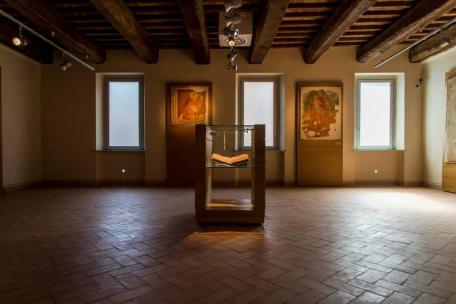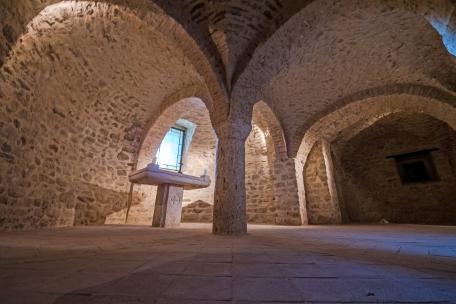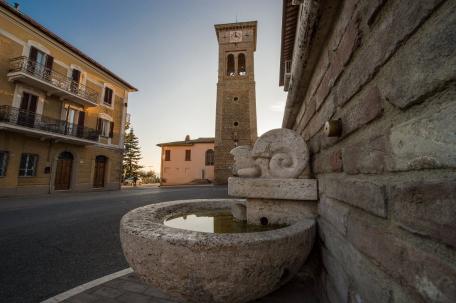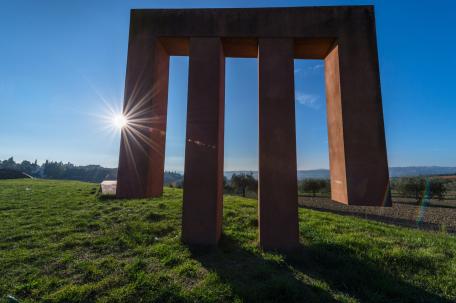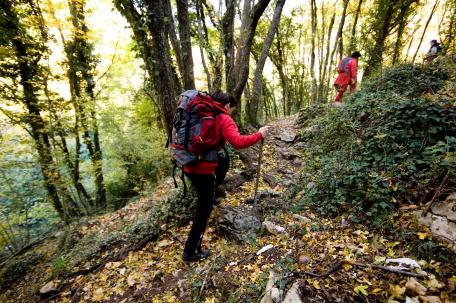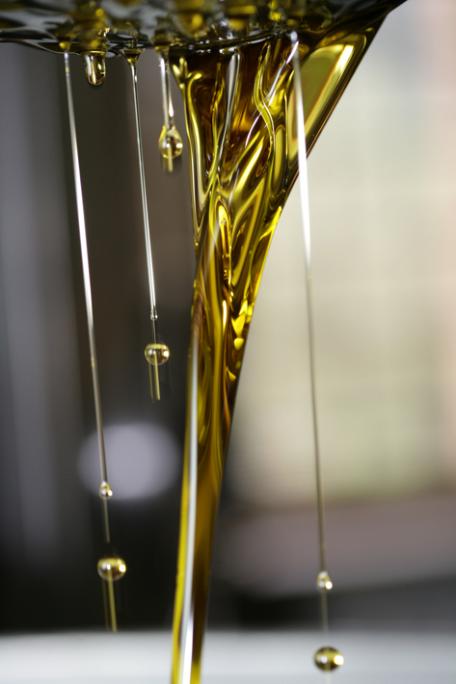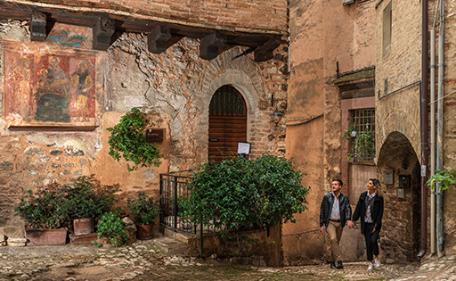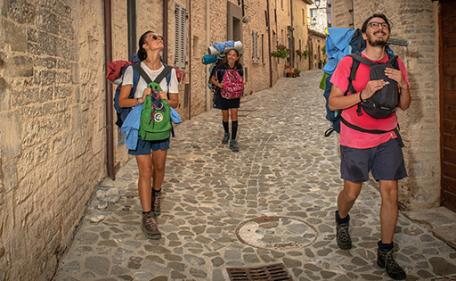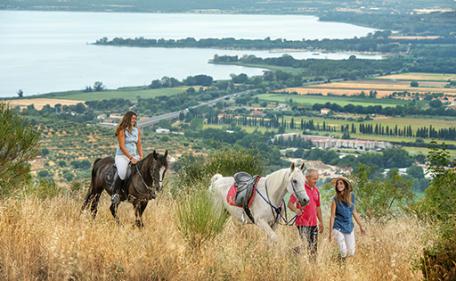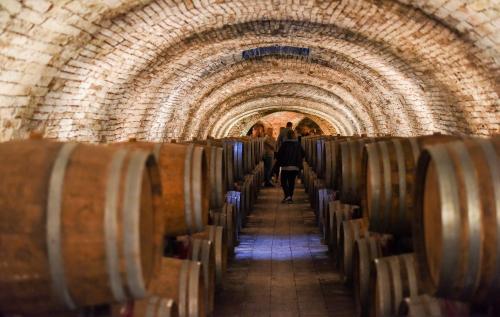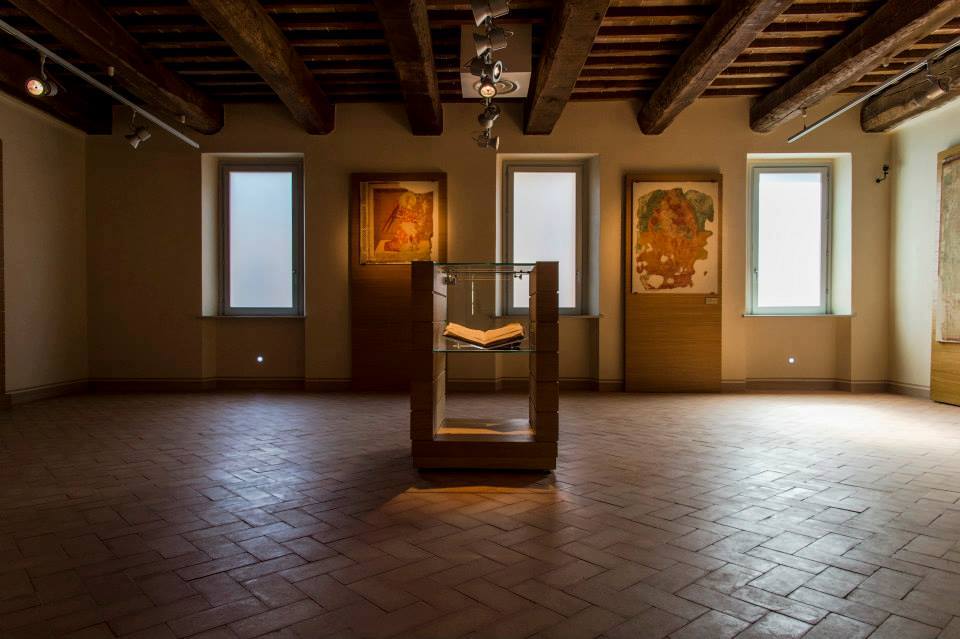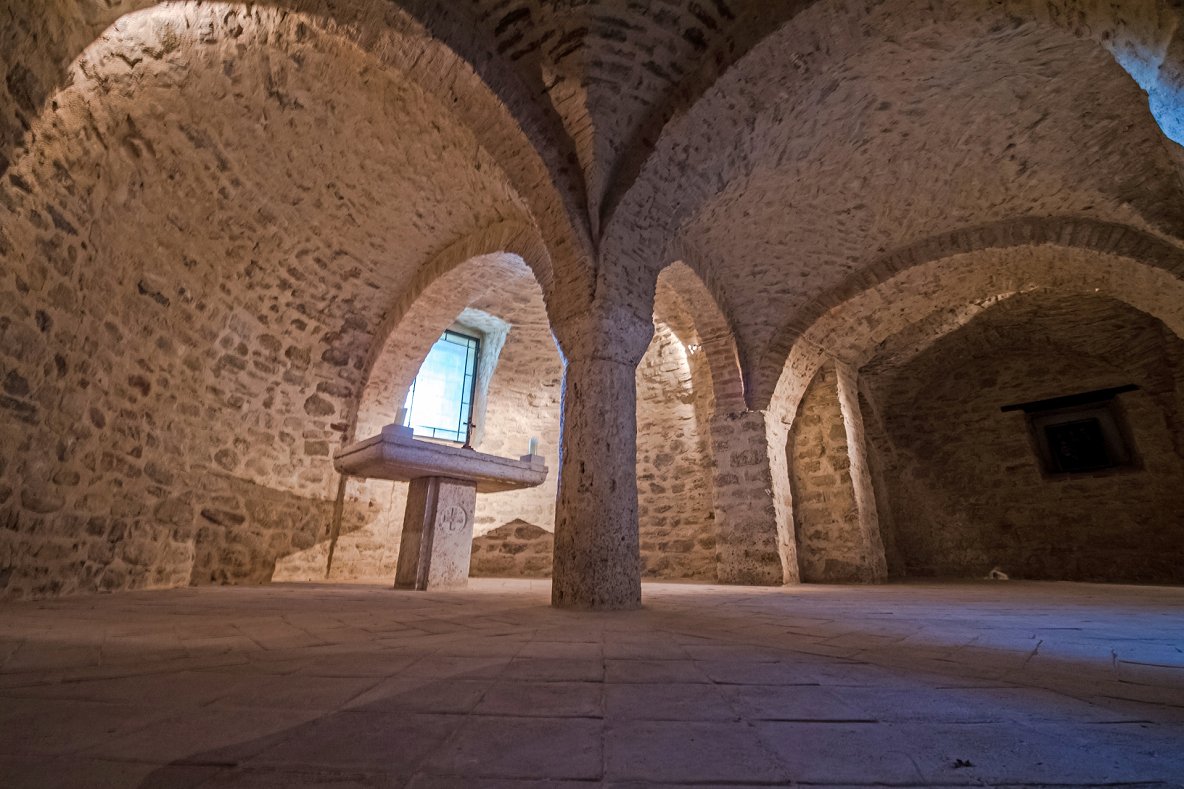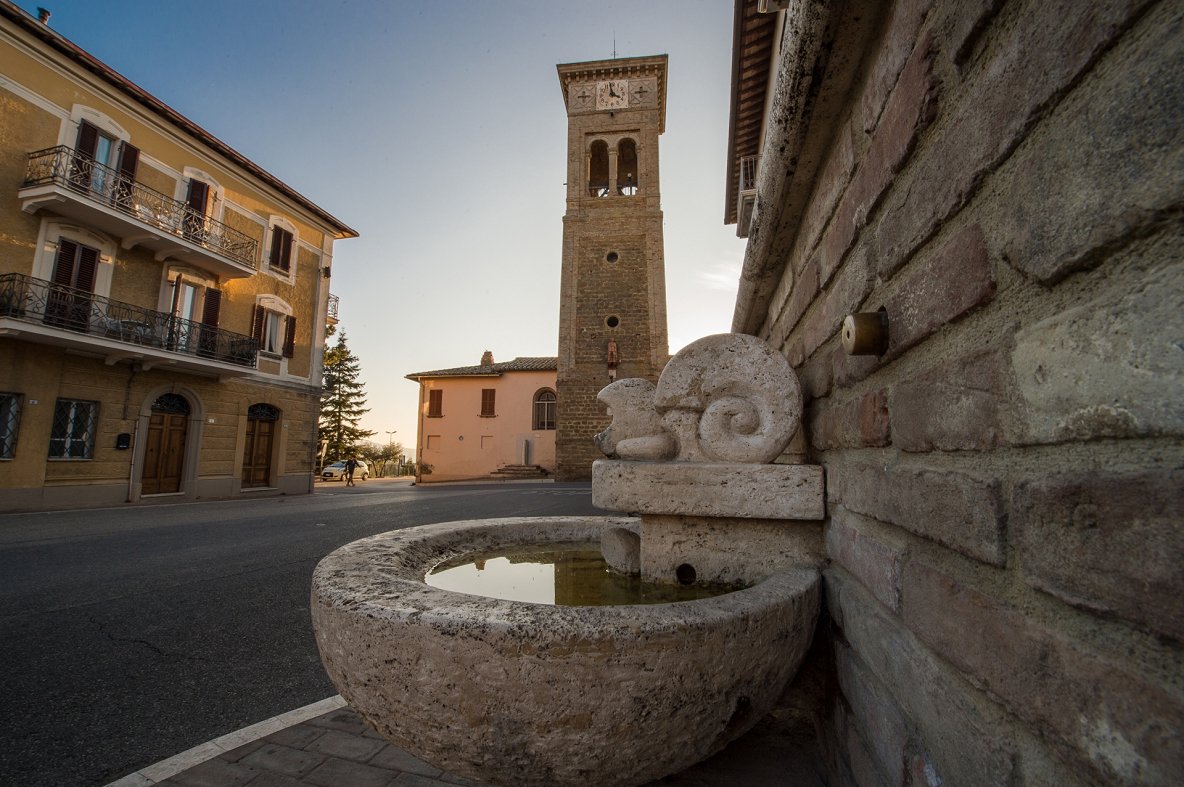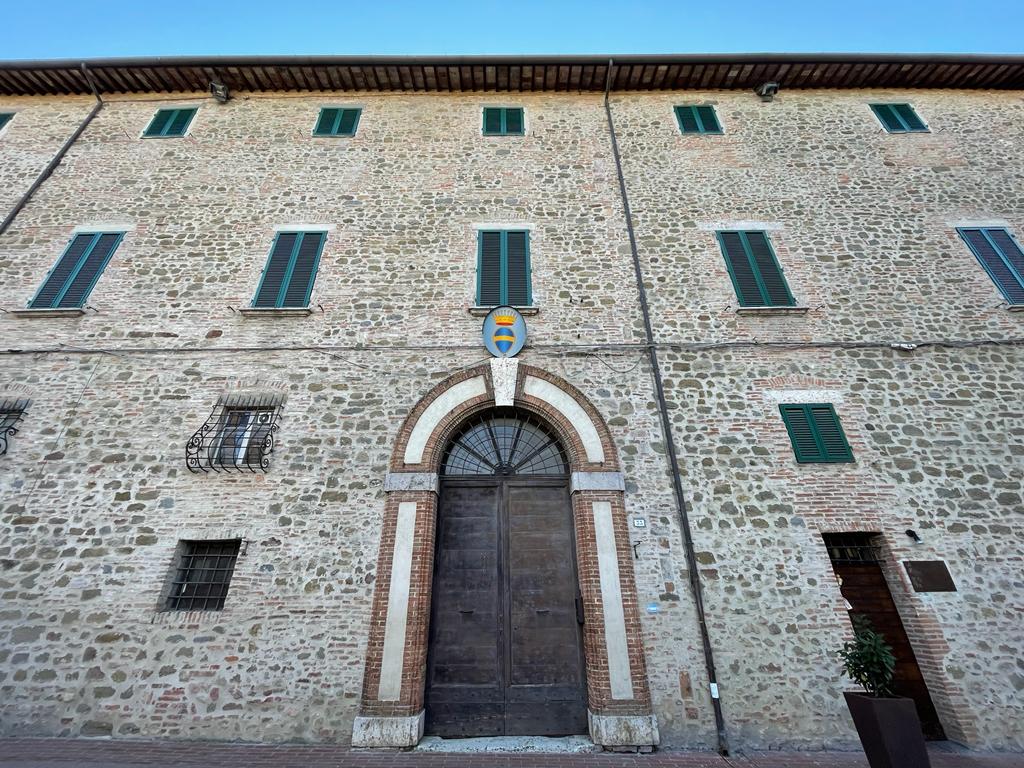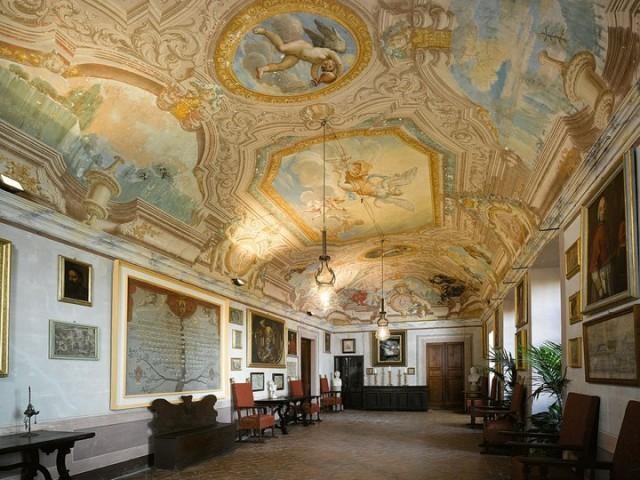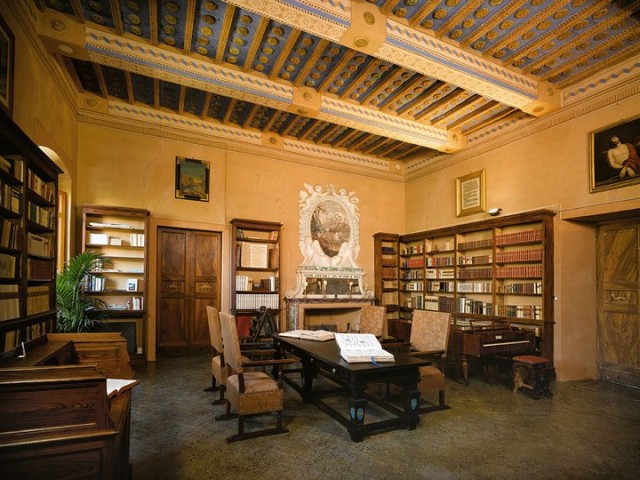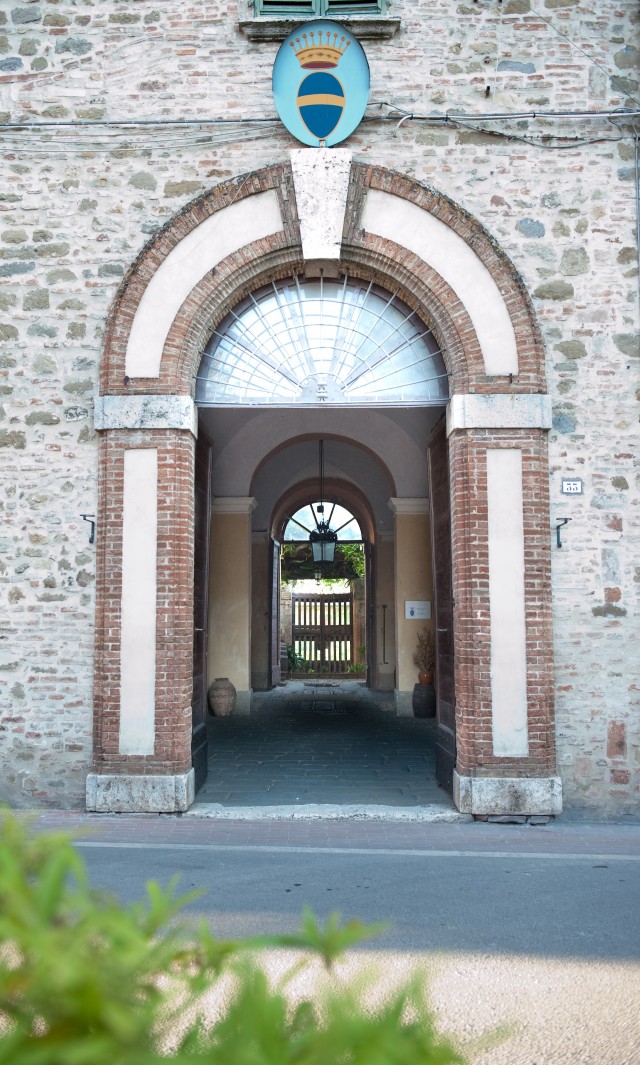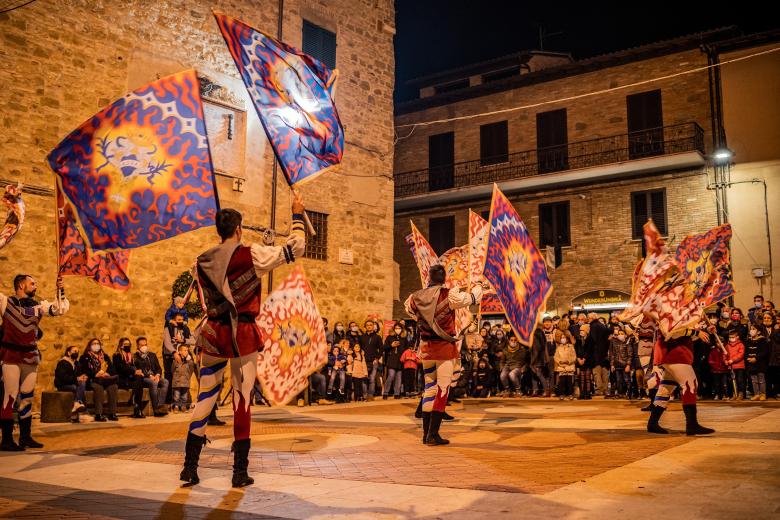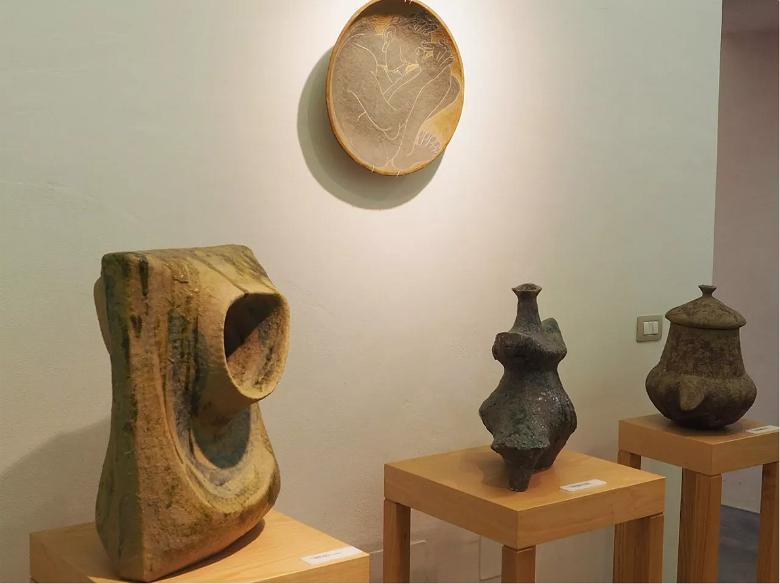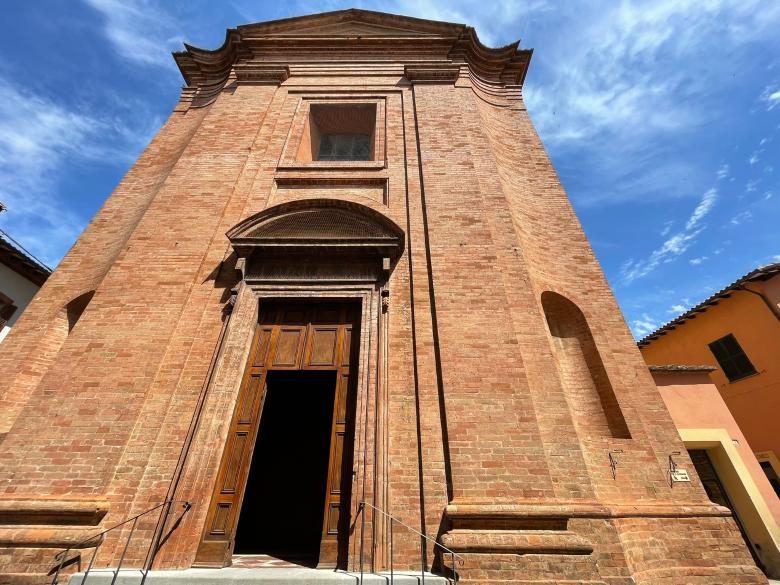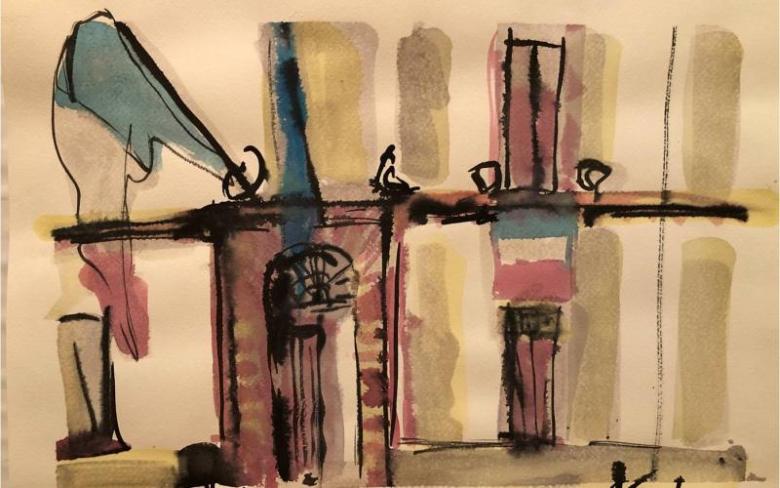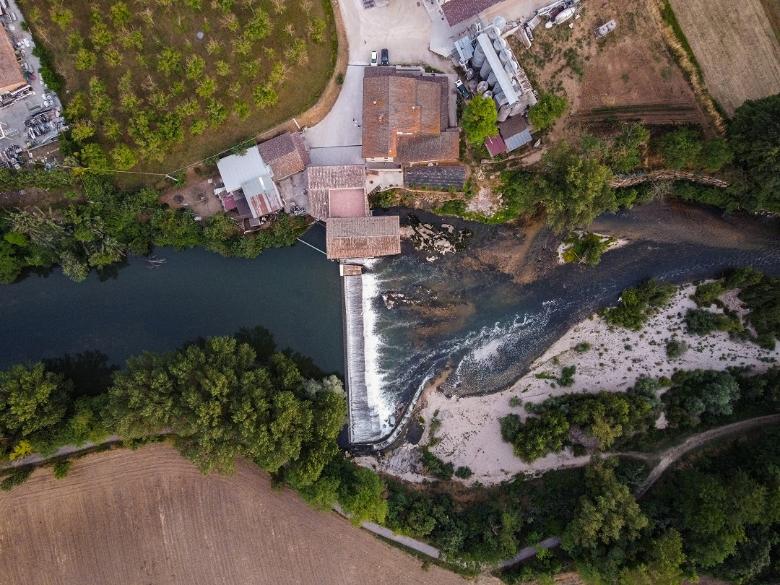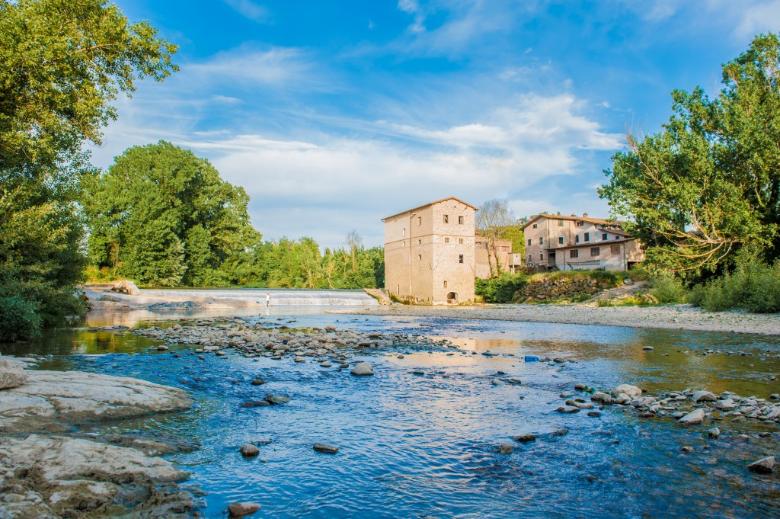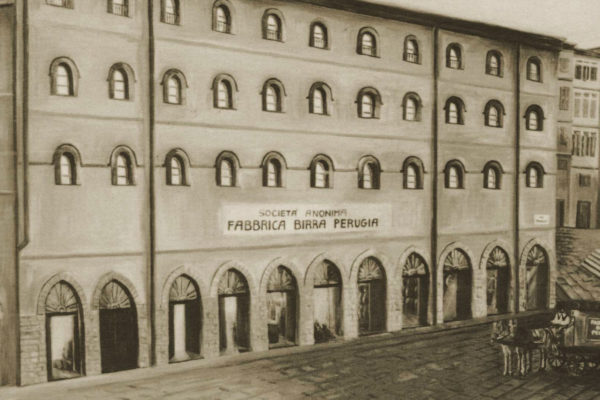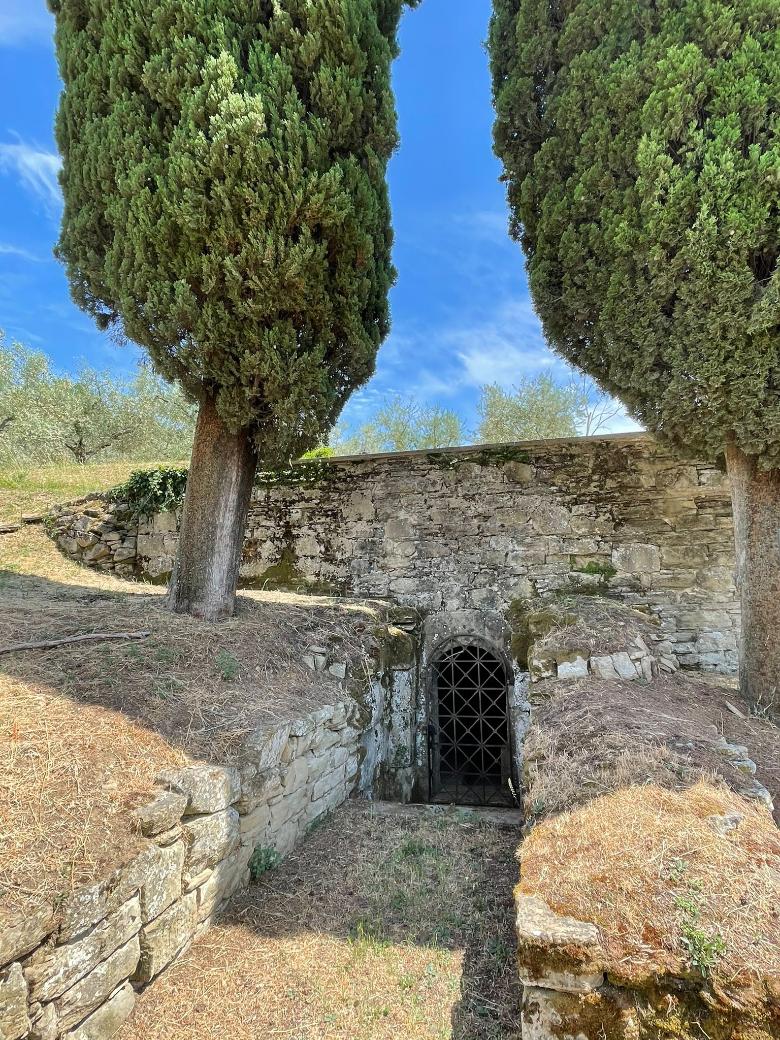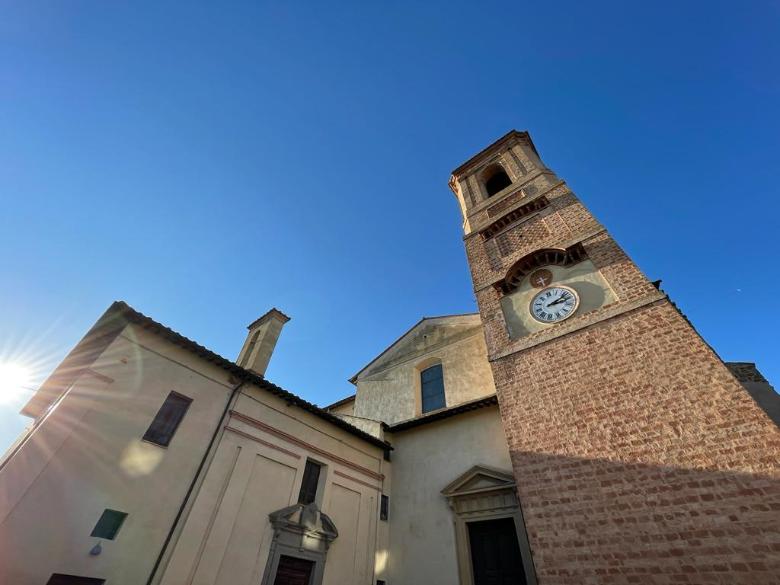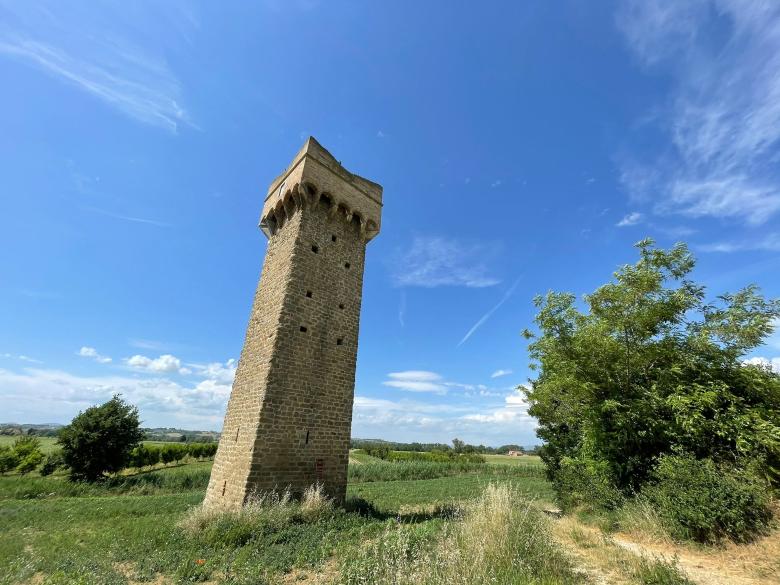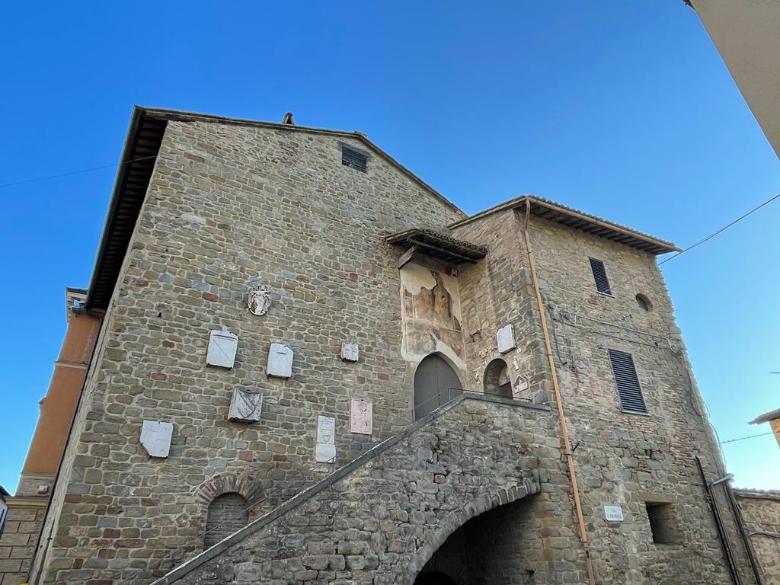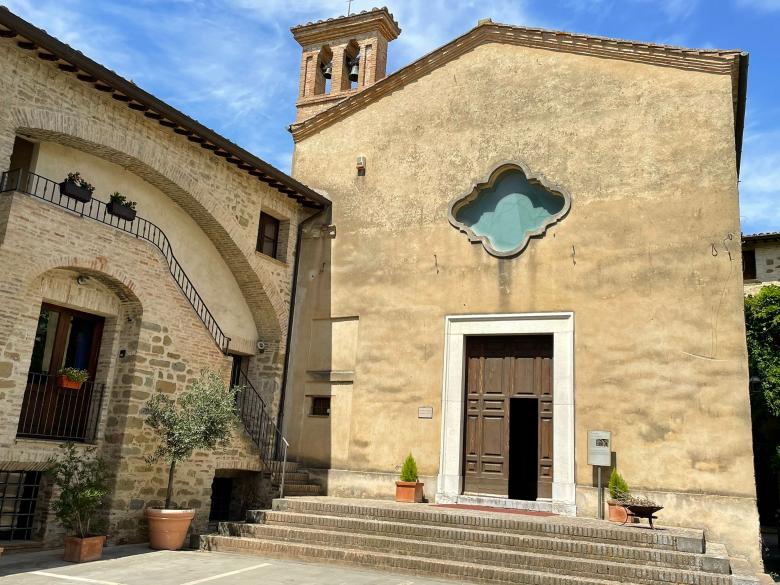The Graziani Baglioni Villa - Torgiano
Located on the corner between the main street of Corso Vittorio Emanuele II and Piazza Baglioni, The Graziani-Baglioni, is a fine example of an agricultural-noble house in this unique area of Umbria.
The sober structure, which dates back to the end of the 17th century and incorporates the remains of older historical buildings, is divided into three floors. At the entrance there is a terracotta plaque engraved with the year 1694, perhaps in memory of the end of the construction work.
The front facade looks out over Corso Vittorio Emanuele II, on which both the main door and the secondary door open. The main door gives access to the staircase through which the residential part of the building is reached, while the latter constitutes the entrance to the agricultural part of the building, with rooms once used for the administration of land property, for the equipment needed in the processing of agricultural commodities and for the storage of products.
Today this entrance leads to the Muvit Wine Museum, a private museum founded in 1974 by the will and commitment of Giorgio and Maria Grazia Lungarotti. The residential part of the building, that until recently was still used as a private residence by the heirs of the Baglioni family, preserves on its main floor a gallery frescoed in the second half of the eighteenth century by Paolo Brizi (1702-1773), with a representation of the four continents. This area of the building also houses a library enriched with literary texts of great theological and cultural interest and numerous rooms embellished with period furniture.
In the hall dedicated to large arms, on either side of the imposing fireplace, two cannons known as, “cannoncini di allegrezza” from the end of the 16th century are preserved along with other noteworthy pieces of artillery.
Another side of the building overlooks a beautiful garden, bordered by a seventeenth-century wall and by what were once the stables. Outside, in a niche, you can admire the fresco by Mario Madiai (Siena, 1944): Resurrection of 1998, one of the contemporary signs present in the city.
In front of the main entrance of the building there is another garden, framed by an eighteenth-century elegant architecture in terracotta and closed by means of an iron gate, dominated by the coat of arms of the noble Graziani family.
